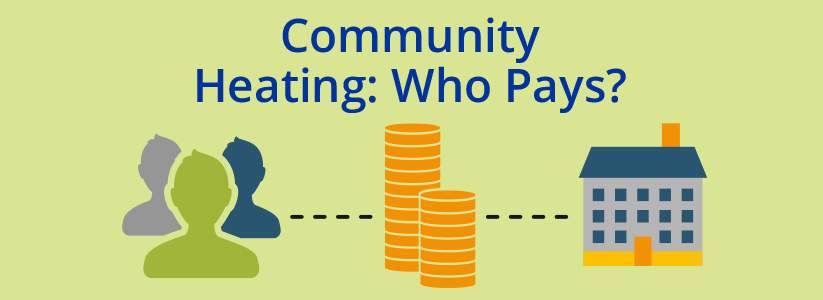

Who is responsible for the various charges amassed by district heating systems, and how are these costs divided up?
Over 80% of UK households have a gas boiler. As well as being expensive to fuel and maintain, this method of individual heating systems is relatively unusual across mainland Europe.
Why is this the case?
On the continent, community heat and power systems are often shared among estates, suburbs or even whole villages. Almost 95% of flats in Finland use district heating.
The total cost of a community heat and power system can usually be split into three elements:
1. The cost of operating, maintaining and replacing the central infrastructure.
This is generally fixed, if funds are set aside for maintenance and replacement.
2. The mains losses - any heat lost between the boiler and the meter in each property.This loss is taken into the tariff as a fixed cost and usually allocated based on property size.
3. The amount of energy used by every property.This varies per property, but is measured and billed using conventional domestic energy meters or smart meters.
Residents typically pay a fixed fee towards infrastructure costs, plus a variable fee based on individual metered usage. Because community heat and power systems offer economies of scale, the cost per property is usually reduced if the systems are well designed and managed. This lowers fuel poverty and increases people’s sense of value-for-money – lessening the risk of non-payment.
Community energy schemes are generally not-for-profit, and are typically managed by local authorities or energy service companies.
Don’t forget that the Westminster and Scottish Governments offer loans and grants towards startup costs for new district heating systems. The renewable heat incentive subsidy applies to CHP and district heating schemes, too.
Avoiding payment pitfalls
Don’t overestimate the cost-effectiveness of community heat and power plants – residents may end up paying more than they’d expected (or budgeted), plunging them into debt.
- Communicate effectively with residents, to ensure they understand the future costs.
- Study long-term raw material costs before calculating likely future bills.
Make it clear to residents whether a sinking fund for infrastructure repair is included in regular payments, or whether one-off fees will be levied occasionally.
Credit or pay-as-you-go?
With community heating systems, the choice between conventional billing options or pre-payment can be made on a property-by-property basis. While many people prefer the former option, the latter reduces debt risks and increases flexibility. It’s becoming an increasingly popular method of billing and payment, with almost half of people in a recent survey expressing a preference for smart pay-as-you-go energy meters in their homes.


